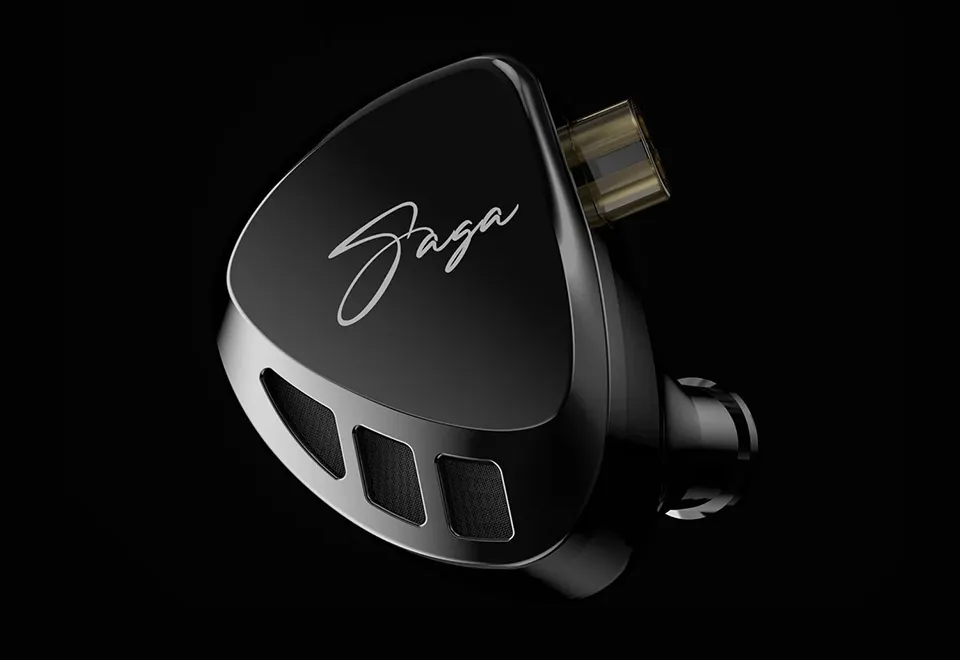Project Metavs.Saga
Sound & Specs Comparison
Information
Both IEMs are widely regarded in the audiophile community. See how they differ in terms of sub-bass response, upper mids, clarity, and overall tonality. Spider charts and rating breakdowns included.
Objective Comparison
Facts, details, stuff.
| General Info | Project Meta | Saga |
|---|---|---|
| Brand | CrinEar | KZ Earphones |
| Country | – | China |
| IEM Description | A debut IEM by Crinacle's CrinEar: a compact, full-aluminum flagship tuned to a “tilted Diffuse Field + bass boost” curve. Delivers vibrant mids, warm sub-bass, and clear treble—crafted for musical accuracy and comfort. | The KZ Saga is a single dynamic driver IEM designed for listeners who enjoy a bold and engaging sound. With its punchy bass and crisp treble, it leans into a fun, slightly V-shaped tuning that works well across modern genres. Despite its simplicity, it delivers a surprisingly open sound with decent detail and separation, all packed into a durable and comfortable shell. |
| Price Level | 100 – 500 | < 100 |
| Housing & Driver | ||
|---|---|---|
| Driver Config | – | Single Dyn. Driver |
| Driver Types | – | Dynamic Driver |
| Shell Material | – | – |
| Cable | – | – |
| Technical | ||
|---|---|---|
| Freq Range | – | – |
| Impedance (Ω) | – | – |
| Sensitivity (dB) | – | – |
| Crossover | – | – |
| Platform Info | ||
|---|---|---|
| Comments | 0 | 0 |
| Visit Count | 96 | 68 |
| External Reviews | 1 | 0 |
Meta Ratings
// Nothing to compare yet.
Sound Characteristics
Saga delivers n deeper and more extended sub-bass, reaching lower frequencies with greater authority than Project Meta (9.5 vs 6). It renders bass with n greater punch and separation, where Project Meta sometimes feels bloated (8.5 vs 6). Listeners may find the low-end impact on It a more engaging during high-dynamic passages (9 vs 6.5). Project Meta renders lower mids a more naturally, giving male vocals and instruments a fuller tone than Saga (6.5 vs 5.5). It strikes a a better balance between presence and smoothness in the upper mids compared to Saga (5.5 vs 5). It provides a more refined lower treble, resolving fine detail and air with greater finesse than Saga (7.5 vs 6.5). Saga captures ambient cues and reverbs a more precisely through its upper treble, enhancing spatial perception over Project Meta (7 vs 6.5). The stereo field on It feels a wider and more holographic, whereas Project Meta sounds more intimate (6.5 vs 6). Track elements feel a more isolated and clean on Project Meta, offering clearer focus than Saga (6.5 vs 5). It shows a better control of masking effects, maintaining clarity across frequency ranges better than Saga (5.5 vs 5). The note presentation is b fuller and more tactile on Saga, giving instruments a stronger physical presence than Project Meta (6.5 vs 6). It hits with n more authority during transients, creating a more explosive effect than Project Meta (8.5 vs 6). Listeners may experience d fewer sharp edges in 'S' and 'T' sounds with Project Meta, whereas Saga can get fatiguing (6.5 vs 4.5). Saga presents instrument timbre with m more natural coloration, giving a realistic tone that Project Meta lacks (7.5 vs 6). Across the frequency range, It stays d more consistent in tonal balance, resulting in a smoother listen than Project Meta (7.5 vs 6). It renders texture m more precisely, making instrument surfaces and vocal grain more palpable than Project Meta (7.5 vs 5.5).
| Project Meta | Saga | |
|---|---|---|
| Sub Bass | 6.0 | 9.5 |
| Bass | 6.0 | 8.5 |
| Bass Feel | 6.5 | 9.0 |
| Lower Mids | 6.5 | 5.5 |
| Upper Mids | 5.5 | 5.0 |
| Lower Treble | 7.5 | 6.5 |
| Upper Treble | 6.5 | 7.0 |
| Sound Stage Width | 6.0 | 6.5 |
| Detail | 6.0 | 6.0 |
| Layering | 6.5 | 5.0 |
| Masking | 5.5 | 5.0 |
| Note Weight | 6.0 | 6.5 |
| Slam | 6.0 | 8.5 |
| Sibilance | 6.5 | 4.5 |
| Timbre Color | 6.0 | 7.5 |
| Tonality | 6.0 | 7.5 |
| Texture | 5.5 | 7.5 |
Tonal Signature
// Nothing to compare yet.

